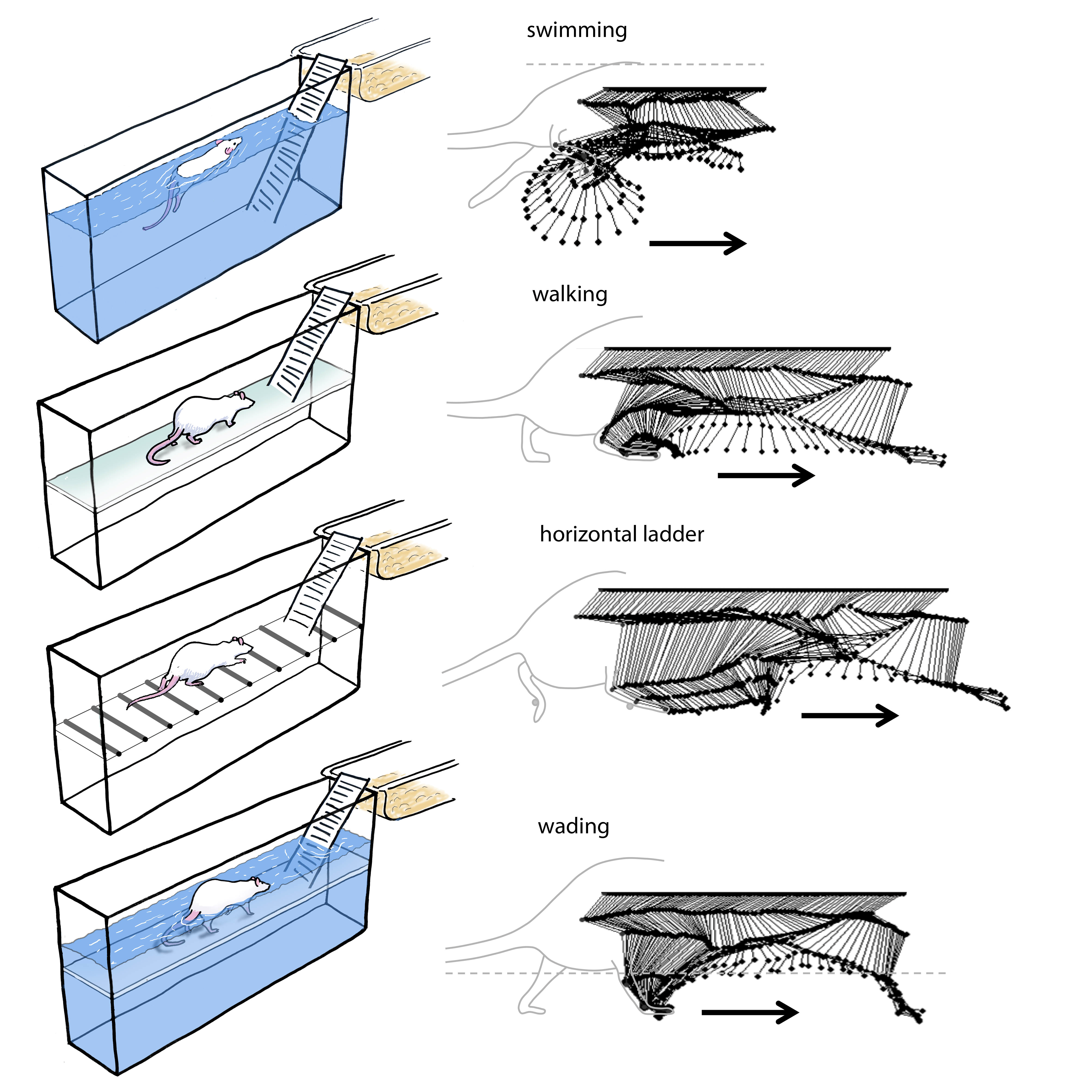Navigation auf uzh.ch
Navigation auf uzh.ch
Although the beneficial effect of rehabilitation and training after a CNS injury is widely appreciated in the clinic, the molecular, cellular and anatomical changes induced by training have not been studied in detail. To this end we have developed a system to evaluate aspects of locomotor patterns and training called MotoRater. Detailed kinematic analysis with a fast-track camera and a mirror system allows e.g. the observation of the use of single digits when walking over a ladder. When wading or swimming in water the animal is weight supported and can thus perform locomotor tasks more easily.

To better understand how rehabilitation strategies can be optimized we are investigating aspects of forced-use or voluntary training. We have developed a 3-story rat cage with enriched environment, where rats can train themselves in different tasks. By equipping every animal with a transponder the amount of training can be correlated with the functional outcome and anatomical changes.
Whereas large spinal cord injuries lead to irreversible loss of functions, it is well known from clinical and experimental observations that more restricted lesions often have a good prognosis for functional recovery. Plastic effects taking place after training lead to anatomical reorganization both at the level of the cortex and close to the site of injury. Based on fMRI analysis of stroke patients indicating that forced training of the affected hand leads to functional improvement and gross anatomical reorganization in the cortex, we are investigating different aspects of plasticity occurring either spontaneously or induced by specific training or drug treatment after such an injury in the rat model.